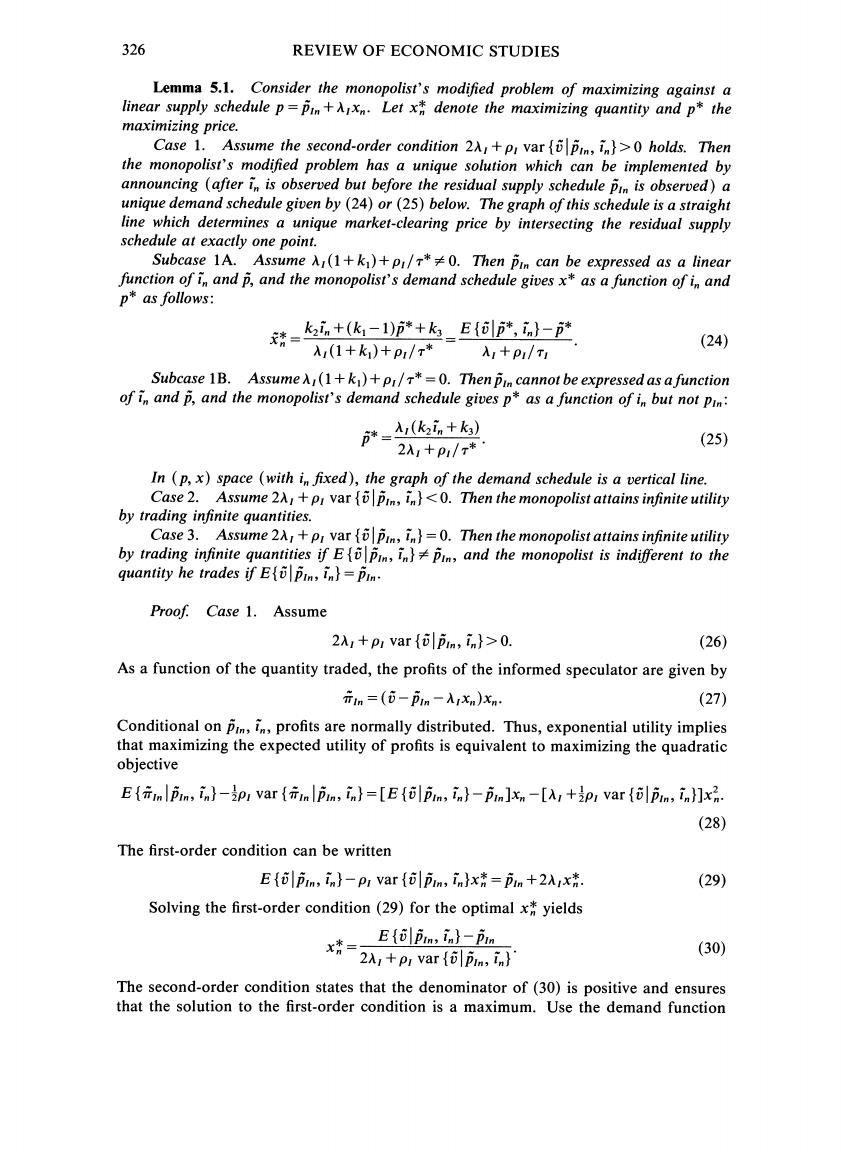正在加载图片...

326 REVIEW OF ECONOMIC STUDIES Lemma 5.1.Consider the monopolist's modified problem of maximizing against a linear supply schedule p=pin+x.Let x denote the maximizing quantity and p*the maximizing price. Case 1.Assume the second-order condition 2A1+p var pin,in)>0 holds.Then the monopolist's modified problem has a unique solution which can be implemented by announcing (after i is observed but before the residual supply schedule pin is observed)a unique demand schedule given by(24)or(25)below.The graph of this schedule is a straight line which determines a unique market-clearing price by intersecting the residual supply schedule at exactly one point. Subcase 1A.Assume Ar(1+k)+p/*0.Then pin can be expressed as a linear function of i and p,and the monopolist's demand schedule gives x*as a function of in and p*as follows: 济=。+k,-1)+k_E创方速,- 入(1+k)+P/r* (24) 入,+P1/T1 Subcase 1B.AssumeA(1+k)+p/*=0.Then pin cannot be expressed as afunction of i and p,and the monopolist's demand schedule gives p*as a function of i but not pin: p*=(飞+k) 2入1+P1/x* (25) In (p,x)space (with in fixed),the graph of the demand schedule is a vertical line. Case 2.Assume 2A1+pI var pin,in}<0.Then the monopolist attains infinite utility by trading infinite quantities. Case 3.Assume 2A1+pI var pin,in}=0.Then the monopolist attains infinite utility by trading infinite quantities if Epi,in pin,and the monopolist is indifferent to the quantity he trades if E(pin,in)=pin. Proof.Case 1.Assume 2A1+pi var (o pin,in)>0. (26) As a function of the quantity traded,the profits of the informed speculator are given by 元in=(i-P1nm-入xn)xn (27) Conditional on pim,in,profits are normally distributed.Thus,exponential utility implies that maximizing the expected utility of profits is equivalent to maximizing the quadratic objective E{fm pin,in}-ipI var {fin pin,in}=[E pin,in}-pin]xn-[Ar +ipI var pin,in)]xn. (28) The first-order condition can be written E pin,in}-pi var {o pin,inx=pin +21x (29) Solving the first-order condition(29)for the optimal x yields E pin,in)-pin =2入1+pvar{i, (30) The second-order condition states that the denominator of(30)is positive and ensures that the solution to the first-order condition is a maximum.Use the demand function